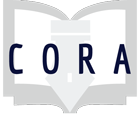This group activity can be used in a variety of disciplines and contexts. Pass the Problem aims to have students provide feedback to other students on database and keyword selection. By having students critique each other it works to build critical self-reflection during the research process (it's also pretty fun!).
Assignments
This assignment was created for an introductory nutrition course for health related science majors and nonmajors to meet the Information Literacy Flag criteria for the core standards at Loyola Marymount University. The assignment focuses on the evaluation of a primary and secondary source on a specific topic to assess the similarities and differences between the sources of information. The primary goal of the assignment is for a pair of students to select a current popular press article that references a recent scientific journal article.
Using ProQuest SIRS Issues Researcher or similar database, groups of students work together to find and read four informative magazine articles representing a variety of opinions on a topic. For each magazine article they write an MLA citation. In an oral presentation of less than three minutes per group, they summarize the controversy without giving their own opinions and explain why they chose the four articles. Students are told to be prepared to answer questions about their topic and why they selected each of the four articles.
Students will learn to identify where they might find school and community data; practice accessing this data; and create a school community data profile. Students will also be introduced to some of the problems of bias when looking at school and community data. For part one, student will find data for the high school they attended and the community they grew up in. In part two, students will collect the same data for a school in the community they will be working in over the course of the quarter.
Students write to communicate and their writing, when citing sources, must communicate what they understand of others’ writings. By asking students to write with the purpose of summarizing, paraphrasing, and quoting a selected article to their classmate, they will experience what you experience when you read their writing. They will understand the purpose and mechanics of using sources in their writing. Activity is highly adaptable and suitable for independent readers high school and above. Activity can be modified for lower level learners.
A brief two page handout on how to read abstracts for scholarly journals for lower division undergraduates in particular. Examples include one from social sciences and one from humanities.
This workshop provides an introduction to creating infographics using Piktochart and includes advice on selecting a design, incorporating data, and structuring a story.
Entering students all take MGT101 – Business Management Practice. Creation of a business plan for a unique product or service is the major project for this course. This Library assignment uses a workshop format to give student groups in Management 101 the task of exploring, evaluating, and reviewing a particular resource important in the business plan research process.
Rather than just providing a 20min presentation on academic databases available through the library website--this lesson is designed to have students demonstrate using library databases for their classmates. Delivered to our ENG 1B (a required freshman course) students, and timed to coincide with their Argument Essay assignment, students practice accessing and utilizing databases to find information sources. Working in groups, the students explore an assigned database before coming up to the podium to demonstrate the materials, search functionality and features of that database.
This activity asks students to work in groups to evaluate Internet sources to meet a research need. Students will use their available wireless devices, smartphones, tablets, computers, or laptops to retrieve the URLs provided to them. Working together, students will ask evaluation questions, guided by a CRAAP handout (attached) or instructor. Then, groups will share their findings with the class. o Students are grouped (3-4 students per group, number of groups in total is irrelevant what it important is the size of the group remains very small).
